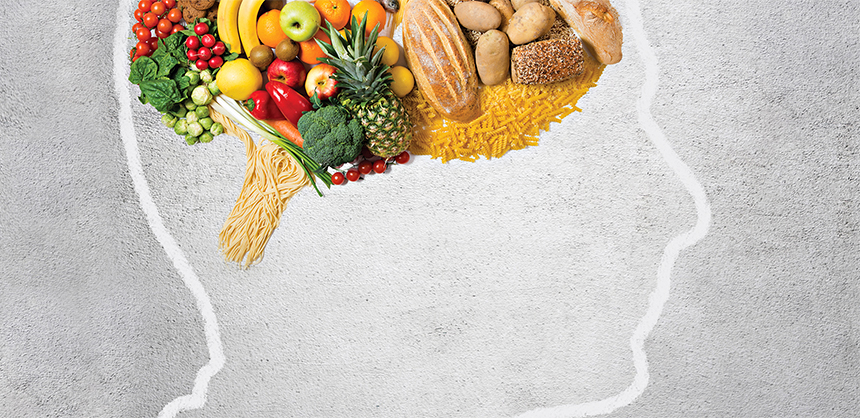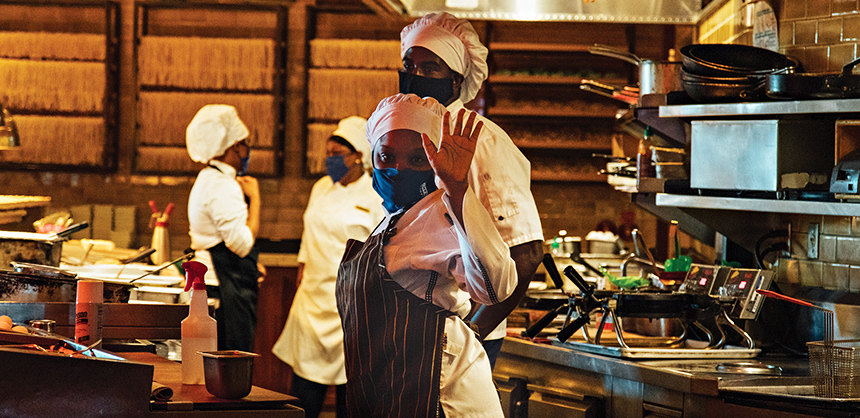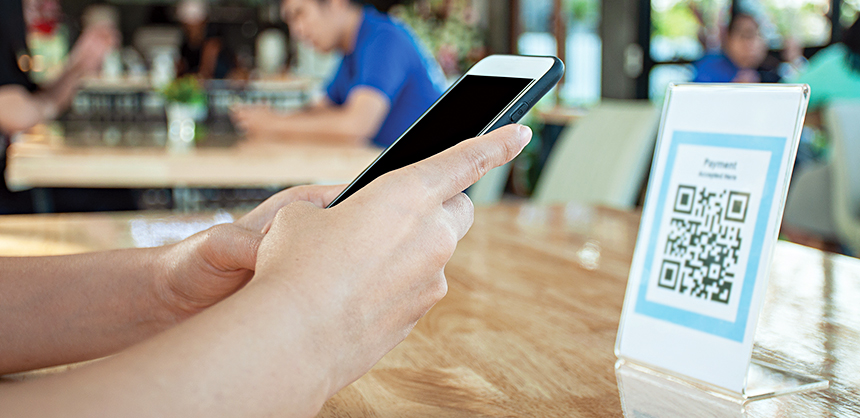Food For ThoughtJanuary 21, 2021
The Pandemic Has Brought About Many Changes in the Way Planners Will Handle F&B... By Sophia BennettFood For Thought
The Pandemic Has Brought About Many Changes in the Way Planners Will Handle F&B...
DepositPhotos.com
COVID-19 continues to make the world of events and food service perilous. Hotels and restaurants have done their best to adapt by re-imagining their spaces, increasing the accessibility of outdoor areas, enforcing social distancing policies and changing their operating procedures. But even these changes aren’t enough to bring most people back to in-person events.
Because of that, industry professionals don’t think meetings in America will be “back to normal” any time soon. “I don’t think we’ll be truly back in person until [well into 2021],” says Mary E. Adams, CMP, president of the event planning firm ECG. “I’m typically an optimist, but I think this is more realistic.” People will remain hesitant to travel until the vaccine is more widely distributed and proven effective.
Once professionals do flock back to in-person gatherings — something that should happen as people try to make up for lost time and experiences — planners will have some new challenges to contend with around food and beverage. There will also be some new opportunities to provide guests with safer, even better dining experiences. Here is a more in-depth look at anticipated food and beverage trends throughout the new year.
Changes to F&B
This year, food may continue to be a focal point of remote events, just as it was last year. Adams points to the preponderance of wine tastings, pizza-making classes, celebrity chef cook-alongs and similar events that popped up after the pandemic started.
Live events are likely to be smaller and focused on bringing together people within a city or region, as opposed to flying everyone to a national or international convention. At those events, expect food to take a less important role. “Those team events where you have people with food — to me, that says recipe for germs,” Adams says. Food will be served only when necessary and in a more sanitary manner. It may even be that, instead of hosting big lunches and dinners, associations point people to restaurants in or around the convention center and encourage them to buy their own food.
Attendees’ expectations about sanitation, personal space, health and food itself are much different now, and those new needs and desires will show up at in-person gatherings. “There will continue to be a focus on food safety and quality,” says Brian Stapleton CCC, CEC, VP of food and beverage, leisure for Aramark. “Information and signage will increase in importance, not only at the station, but leading up to the event, as guest awareness and needs have been altered.” Outdoor meetings will continue to be popular because they provide both beautiful surroundings and a perceived sense of higher safety.
Many meals will continue to come prepackaged for the time being this year. Venues and planners should look for ways to use eco-friendly packaging options to cut down on waste and keep with the trend toward meetings that have a lower environmental impact, Stapleton says.
An alternative to the boxed lunch is an assortment of foods that come prepackaged or wrapped that can be set on a table to allow people to choose what they want. “The only thing not in bottles is coffee. You can have servers there to pour that and hand it out,” says Derek Jenks, CMP, president and CEO of Event Planning Concepts. Once live events restart in earnest, Jenks thinks people will want things to go back to the way they were pre-COVID-19. “The difference is going to be that you’ve got to use a lot more space [for meal service] and maybe use delay screens in multiple rooms if there’s a speaker or an awards program,” he says. He doesn’t expect to see a lot of meal-time entertainment, such as musicians or comedians, for a while. While seating arrangements may be similar, there will be fewer people around tables to comply with social distancing guidelines.
As soon as it’s perceived to be safe enough to do so, people will be thrilled to return to dining with their friends and colleagues. “Post-COVID, being able to go out to dine in a restaurant will be an experience in and of itself,” Stapleton says. “Food, beverage, service and value will continue to be important.”
So will the idea of eating and using food as an experiential item, which is likely to make a comeback. “Authenticity and sense of place continue to reign, especially as folks have been at home and not traveling,” says Bryan Gay, senior vice president of sales at the Atlantis Paradise Island resort in the Bahamas. “Our menus add even more depth by offering our guests the experience of quality, locally sourced ingredients and presentation that mirrors our beautiful environment.”
Planners can go back to delivering that sense of experience by working with hospitality professionals who can balance the need for perceived safety and the desire to live a little. “Going to a restaurant or a hotel should always be an experience, and that experience starts with the chef, who is well trained in food safety and health at restaurants and hotels,” says Omar Torres, director of food and beverage and executive chef at the Hilton Pensacola Beach. “Today, chefs are more involved in the entire operation of food and beverage in both hotels and restaurants. The new style for restaurants is fun, with a great synergy between the kitchen and the bar. Now, you see chefs more involved on the cocktail menus, and that creates the full experience of food being perfectly paired with beverage.”

While F&B service will remain a big part of events, some experts suggest it will be quite a while before attendees return to traditional buffets and other practices done before COVID-19. Courtesy of Bryan Gay
Food Trends
Once planners have to start ordering meals for in-person events again, what types of food will people want? “I think the request for healthy food will get even stronger in the near future,” Torres says. “There will be more fresh ingredients in your food, like vinaigrettes for meats instead of heavy, creamy sauces. Sous vide will get more popular. There will be more greens in your plate. Hot ingredients are and will continue to be avocado, lemon, kale, arugula, quinoa and root vegetables.” Ramen and Caribbean-style seafood will remain in high demand. People will also get excited about locally grown, lighter and seasonal fare, according to Stapleton. Plant-based proteins will continue to be popular, as will healthy dishes such as bowls made with grains and vegetables.
Catering to people with specific dietary needs has been an important development in event food service in recent years. While that’s still important, planners and guests need to understand that hard-hit hotels may be less accommodating now. “I think the way it will look different is there will be less options,” Jenks says. “I do think that properties will still offer options in the major areas: vegetarian, vegan, peanut allergies and gluten free. From an end-user standpoint, people are going to have to be a little more pliable and the options are going to be less.”
Service Trends
Just as important as the types of foods people will be eating are the ways and places where it will be served. Whether or not buffets will return is a big question. Adams is not optimistic. “People are going to be leery of being around other people and having them touching things and any opportunity for contamination,” she says.
Jenks thinks anything that requires a “station of stuff,” such as taco or omelet bars, will become much less prevalent. “If you have buffets, you’re going to have servers serving people and handing them the plates,” he says.
Torres is a proponent of open kitchens and action stations in banquets and catering, which he sees becoming very popular. “Throughout my career, I’ve focused on making buffets more interactive, with cooks preparing salads and appetizers and handing them over to the guests,” he says. “I think the future of buffets in both restaurants and banquets will evolve to a more interactive buffet with more culinary presence.” Another option for buffets, he points out, is to stock them with pre-made items with covers, such as salads in Mason jars.
The idea of transparency in food preparation will take off. “As we prepare outdoors on the beach and across our Royal pool deck, we plan to use mobile show kitchens so guests can clearly see all the food preparation and assembly,” Gay says. “Our professional team has been trained to serve guests safely to meet and exceed our health and safety guidelines.”
Says Stapleton, “Sit-down dining with plated meals will come back, most likely as restaurants begin to open and people become comfortable with public dining.” Jenks points out that plated meals can also be covered with a plate cover or sealed with plastic wrap to keep out contaminants.
Display tables are one thing that may be slow to return, Gay says. And people will be reticent to jettison some of the innovations that took off during the pandemic. According to Stapleton, these will include things such as touchless payment systems, the ability to view restaurant menus and order online, and curbside pickup for food.
Interest in virtual food and beverage-based events is likely to continue and evolve. “One of the things we’ve been trying to do, and that will gain popularity, is to support local purveyors and smaller restaurateurs rather than the larger caterers, because there’s been such an impact throughout the virus,” Adams says. “Clients want to give back to the community or have a tie to the community.”
One challenge for associations looking to try these remote events is privacy concerns, especially for industries such as finance and health care that have strict laws in this area. Event managers may not be able to compel people to provide personal information such as their home address, which is necessary for shipping a box of food or wine. “You’re asking people to mix work and home, and people may be uncomfortable sharing their information,” Adams says.

Women’s hands are using the phone to scan the qr code to select food menu. Scan to get discounts or pay for food. The concept of using a phone to transfer money or paying money online without cash.
Beverage Trends
“People are definitely drinking more alcoholic beverages, and I don’t think that’s going to end,” Adams says. “Coffee and other stimulants are going to be in high demand as well. People want to feel better, so whichever way they’re going to do that, they’re giving themselves permission to do it.”
The single-serve beverage trend grew rapidly with COVID-19 to support curbside pickup, Stapleton says. People will still want things such as ready-to-drink cocktails, and canned or bottled beer and wine when they return to meetings and conventions. Signature cocktails will continue to be popular at events, as will hard cider, craft beer and locally made spirits. These trends, along with the ubiquitous hard seltzer, are driven by young people, who are an ever-increasing part of the audience.
“Sparkling and infused water continues to grow in the market,” Stapleton says. This is in line with the healthy eating trend, which will continue as people stay concerned about keeping their health good and their immune systems strong.
“I see the kitchen, which is inspired by farmers, inspiring the bar,” Torres says. “Chefs like myself are now creating wine lists, beer selections and cocktail recipes. Now, you can enjoy a cocktail with dehydrated fruit, or a nice piece of house-smoked pork belly, or a hot pepper, and it’s all fun and a great experience. Another style of cocktail that will start getting popular will be warm/hot cocktails as chefs get more involved and the concern for food safety is now even higher.”
In line with the concern for safety, Adams envisions a future where bar service will involve no lines or glass refills. Ordering may be remote, with attendees using a smartphone to make their drink orders for pick-up at the bar. And as stated, touchless payment will need to be an option.
Pricing And Communication Will Be Key
Important things for planners to watch for this year include the prices venues are charging for food and maintaining good communication around F&B needs with stakeholders. Jenks is concerned that properties will begin to roll the cost of extra services, such as packaging and served buffets, into the overall price for catering at some point — without necessarily being transparent about what they’re doing. “Hotels will eat these costs initially, especially for organizations willing to hold meetings in Q1 to Q3,” he predicts. “But there will be a time when hotels will start saying, ‘This is cumbersome financially.’” Instead of menu pricing going up by 2% to 5%, he foresees increases of closer to 10%. As a result, associations may need to plan to spend more money on food service, cut back on special requests, and more carefully read contracts to make sure there aren’t hidden costs.
All of this will require closer communication with venues. “All parties must continue open dialogue when coordinating and planning,” Gay says. “More so now, this is critical to ensure that dining experiences meet, and follow, all health and safety protocols, while providing a guest experience that is above and beyond expectation. It will also be vital to maintain good communication with event attendees. Before, people would show up and find standard-issue conference food. I think you’re going to have a lot more in-depth conversations.”
People are going to want to know things like what precautions are being taken to ensure their safety, what is being served and who is preparing it. “A lot of what instills fear is lack of communication, so I think the reverse is also true,” he adds. “You can really garner some trust, which is a big issue with events.” | AC&F |










